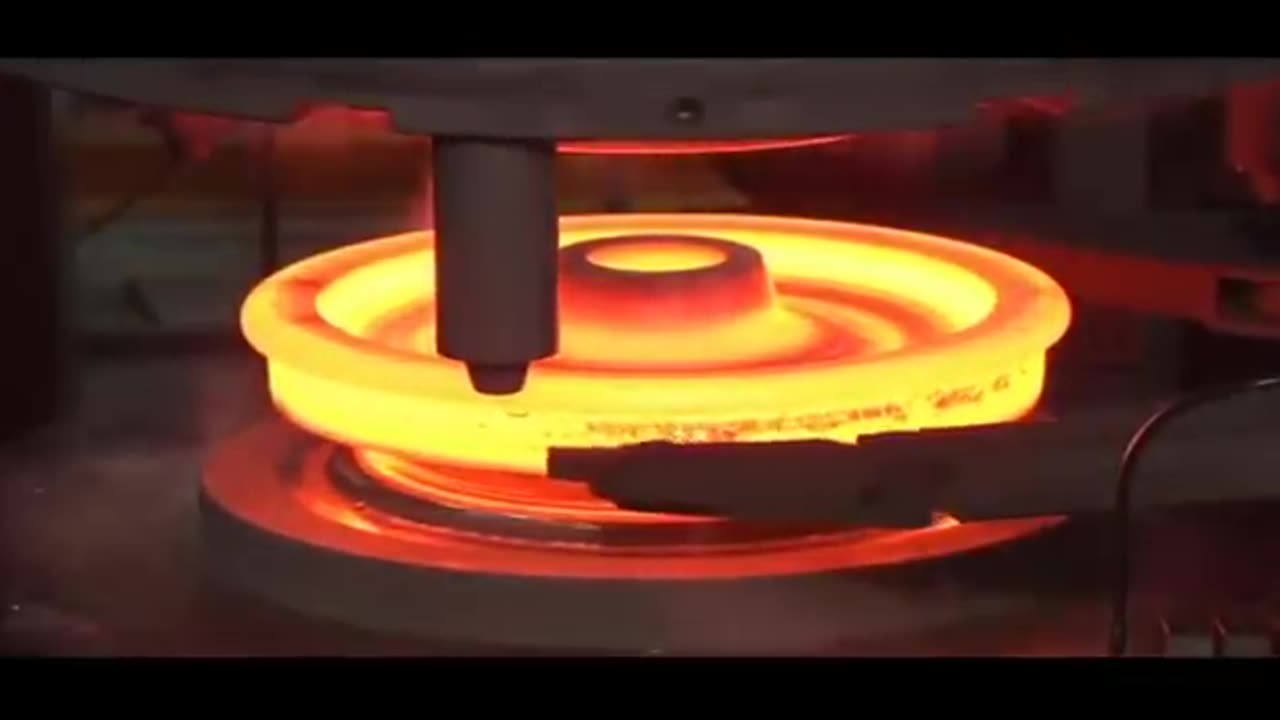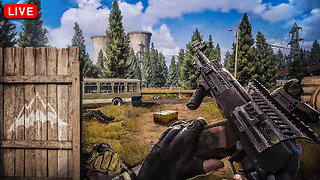Premium Only Content

Train wheel production process with an automated forging line
Train wheel production process with an automated forging line
A train wheel or rail wheel is a type of wheel specially designed for use on railway tracks. The wheel acts as a rolling component, typically press fitted onto an axle and mounted directly on a railway carriage or locomotive, or indirectly on a bogie (in the UK), also called a truck (in North America). The powered wheels under the locomotive are called driving wheels. Wheels are initially cast or forged and then heat-treated to have a specific hardness. New wheels are machined using a lathe to a standardized shape, called a profile, before being installed onto an axle. All wheel profiles are regularly checked to ensure proper interaction between the wheel and the rail. Incorrectly profiled wheels and worn wheels can increase rolling resistance, reduce energy efficiency and may even cause a derailment. The International Union of Railways has defined a standard wheel diameter of 920 mm (36 in), although smaller sizes are used in some rapid transit railway systems and on ro-ro carriages
-
 LIVE
LIVE
StoneMountain64
2 hours agoHitting Max lvl in Arena Breakout Infinite
97 watching -
 LIVE
LIVE
Right Side Broadcasting Network
4 hours agoLIVE: Pres. Trump Makes Announcement on Significant Medical Findings for American Children - 9/22/25
10,496 watching -

Stephen Gardner
1 hour ago🔥ALEX JONES BOMBSHELL: The BIGGEST MYSTERY in Charlie Kirk death EXPLAINED!
1.46K18 -
 LIVE
LIVE
The HotSeat
1 hour agoWhat's Next? Understanding What You Are Up Against.
789 watching -
 LIVE
LIVE
Film Threat
18 hours agoVERSUS: DISNEY DUMPS KIMMEL + HIM SPORTS HORROR | Film Threat Versus
71 watching -
 LIVE
LIVE
The Tom Renz Show
1 hour agoTrump, RFK & The Major Announcement - Autism?
226 watching -
 8:36
8:36
Dr. Nick Zyrowski
6 hours agoHow to Tighten Loose Skin Naturally (No Surgery Needed)
9.01K2 -
 1:17:34
1:17:34
Sean Unpaved
4 hours agoNFL Sunday Showdown: Browns' Brutal Blitz Best? Dart's Daring Debut Dawns, Bears Breakthrough!
29.9K -
 6:33
6:33
Tundra Tactical
4 hours ago $0.45 earnedStupid Gun Myths & Questions Ep. 1 🛑NEW SERIES!!🛑
5.32K1 -
 1:00:25
1:00:25
Jeff Ahern
1 hour agoMonday Madness with Jeff Ahern
3.16K1